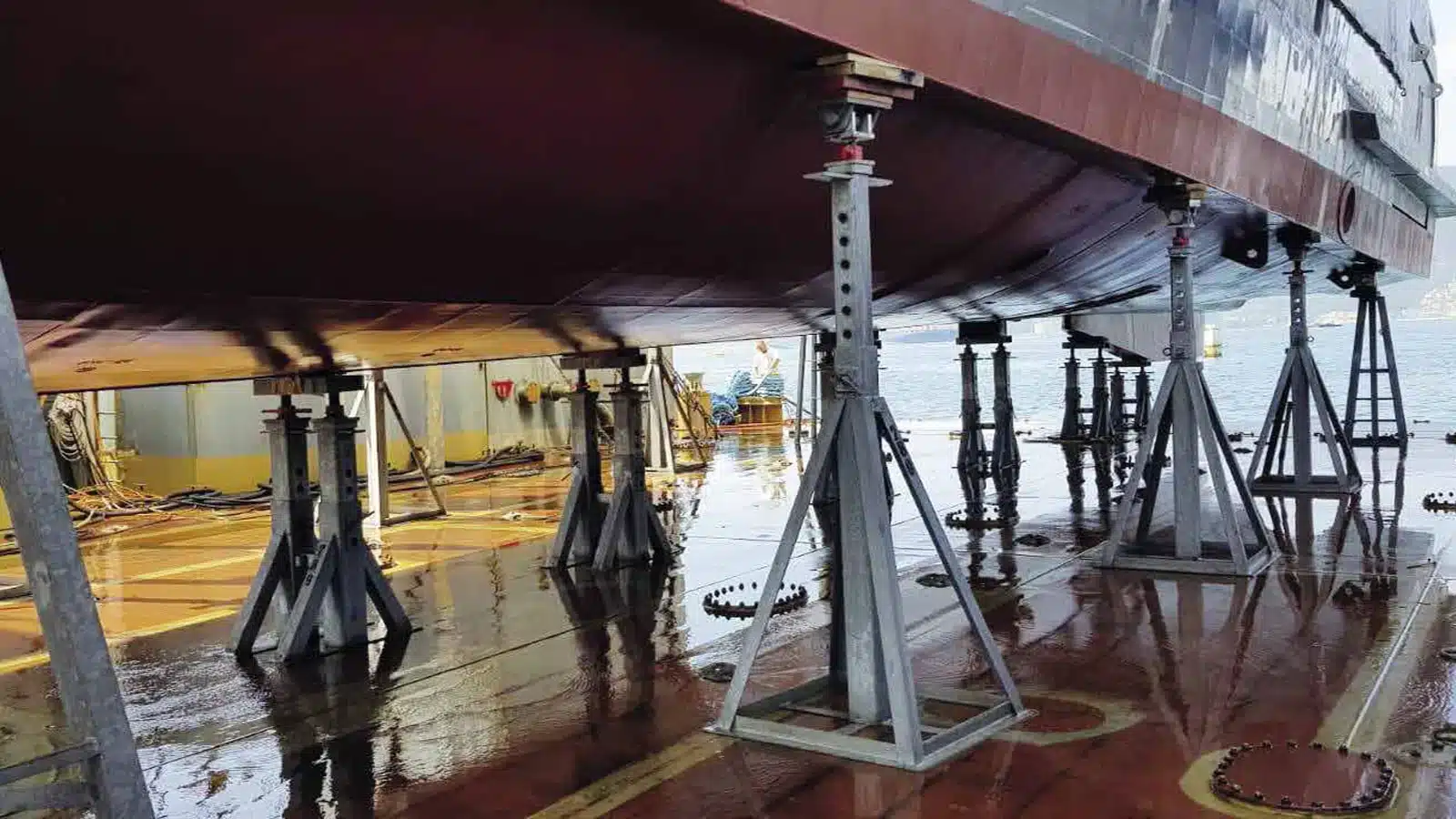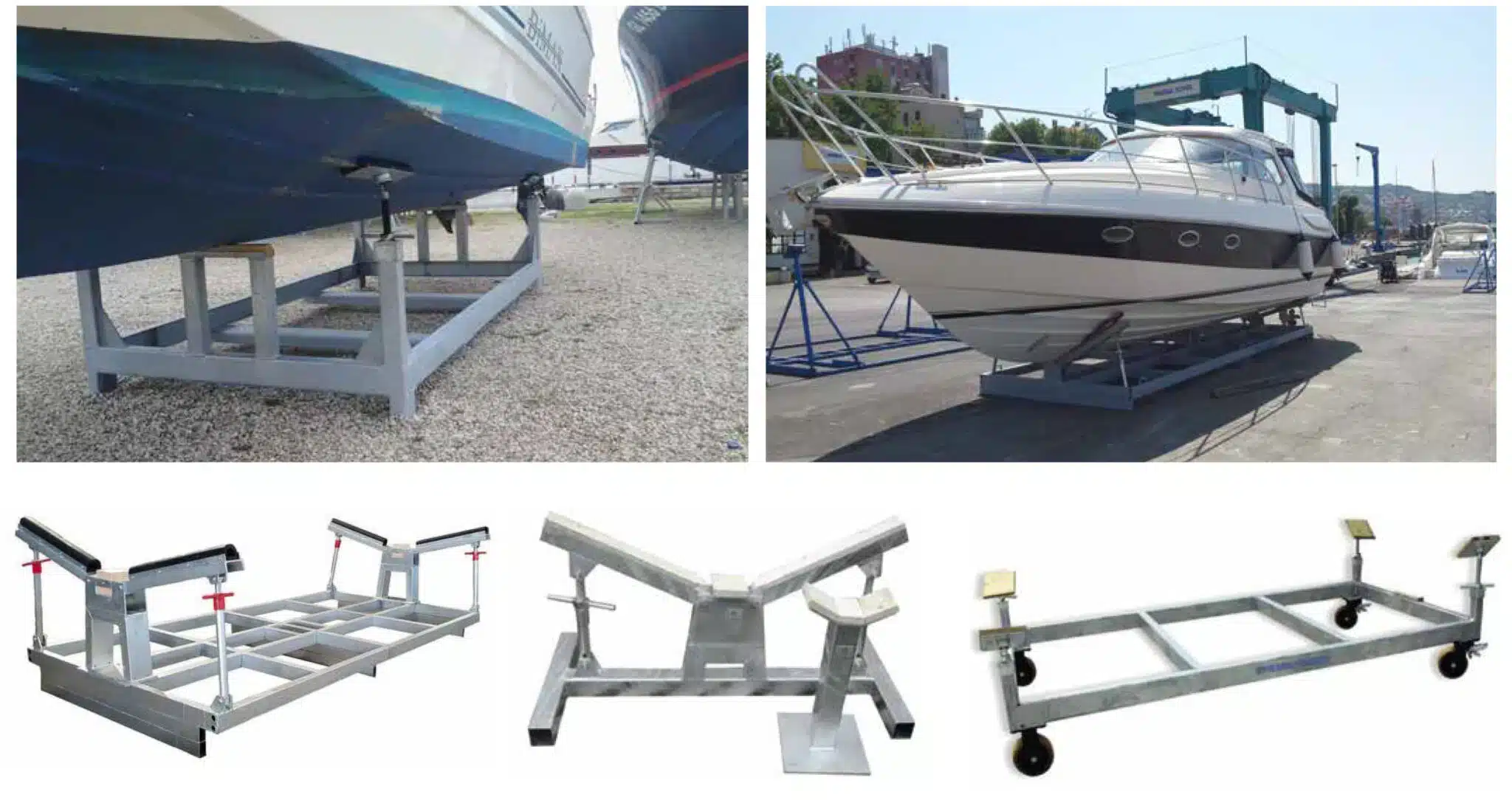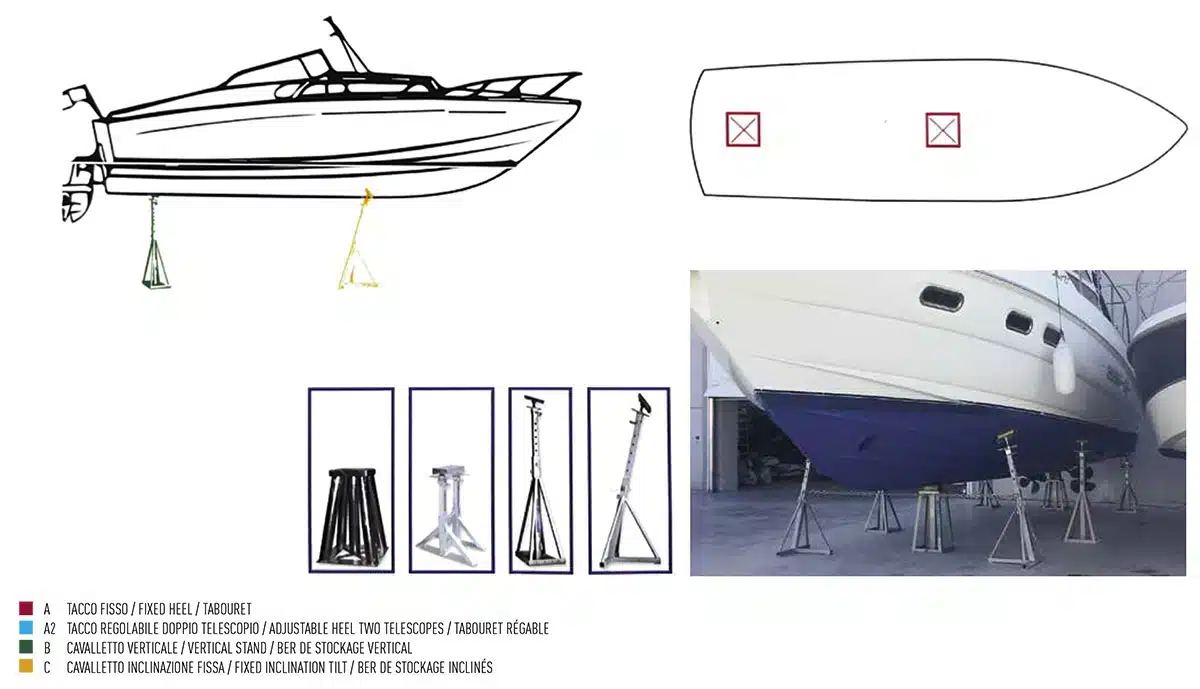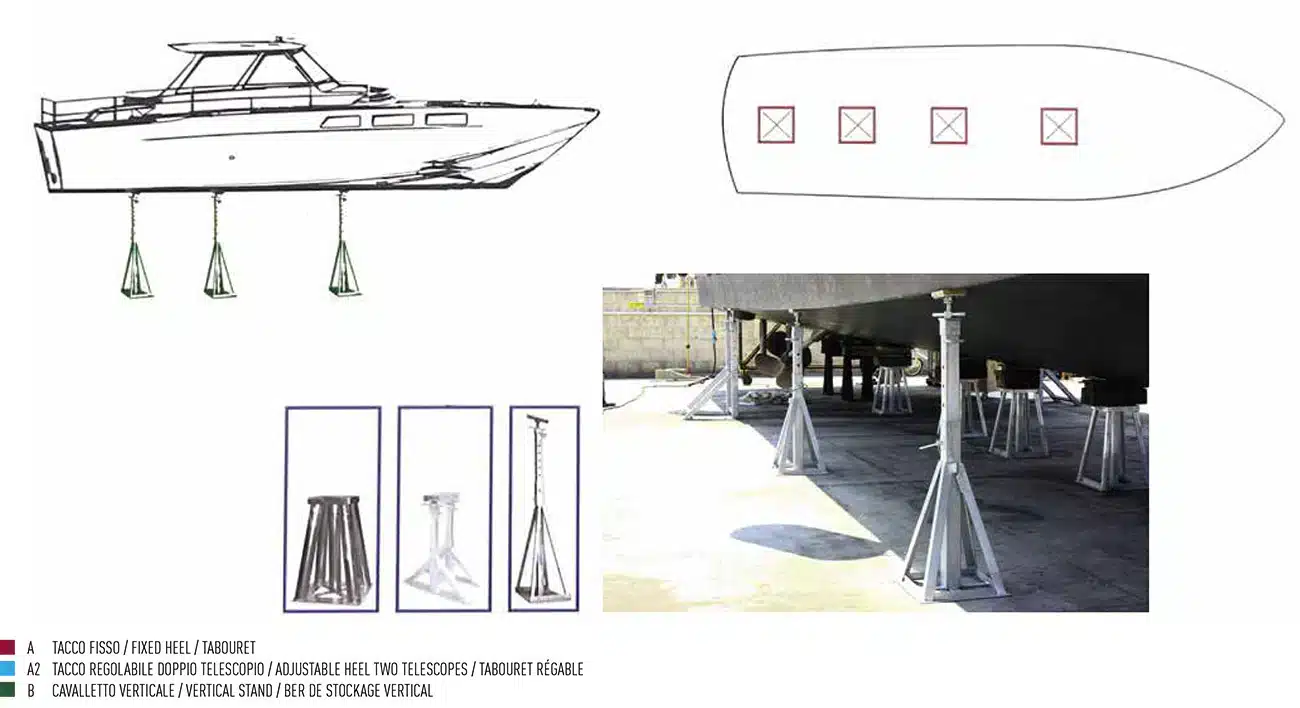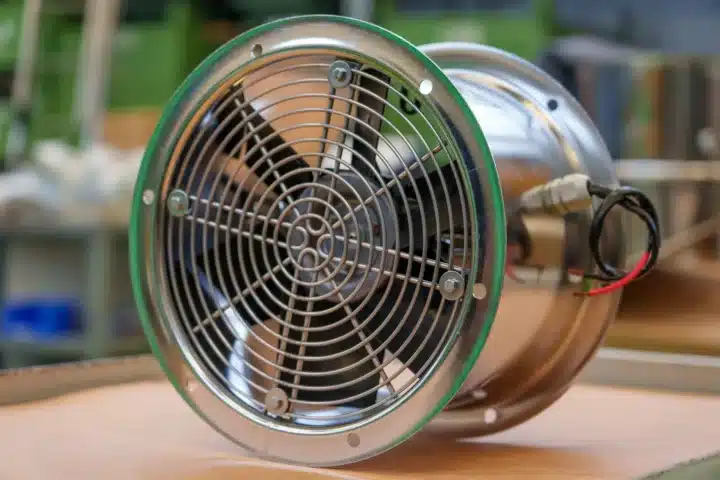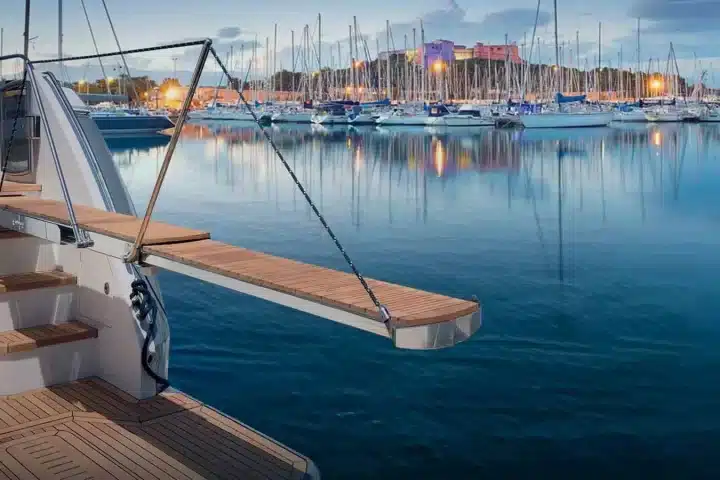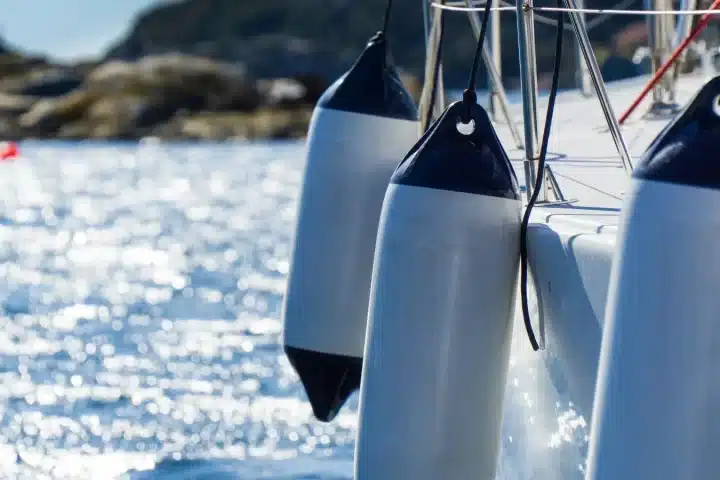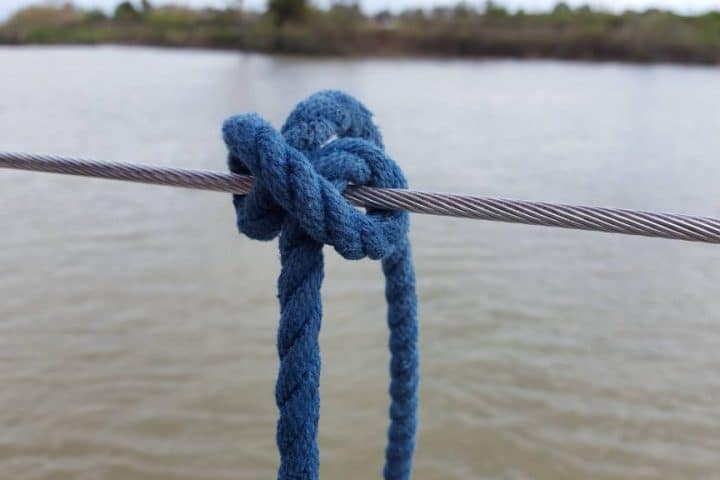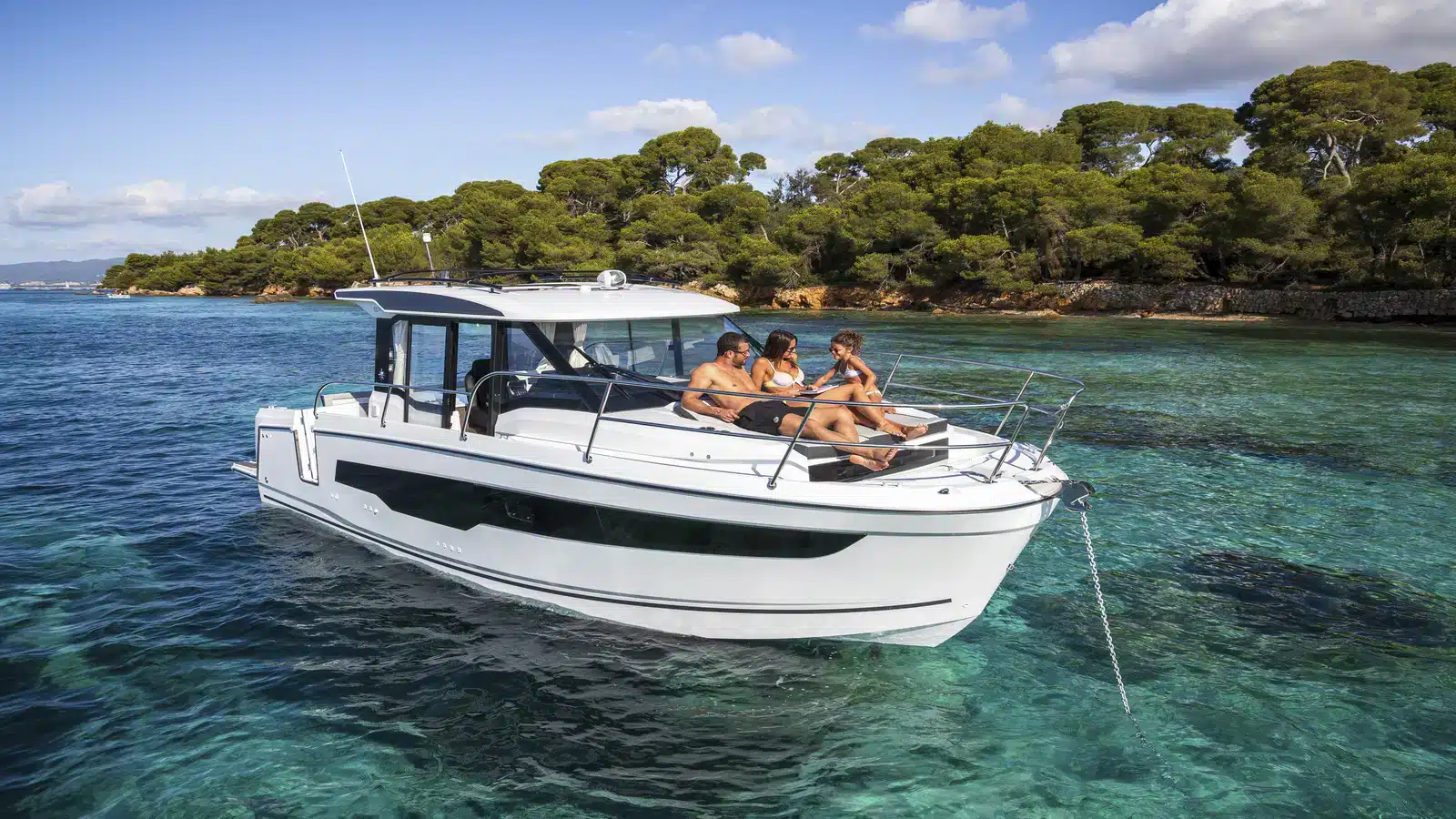How to heel the hull: expert tips to avoid damaging the boat and build the perfect cradle
During the winter, when the boat is not in use, many boat owners prefer to keep their vessel out of the water rather than afloat. This choice has a triple advantage: on one hand, it allows reducing mooring costs, and on the other hand, it enables cleaning the hull and avoiding worries about the integrity of the lines during stormy days. However, the decision to haul out the boat requires the use of professional cradles that can provide safe, comfortable, and sturdy housing for the boat, regardless of its size. Typically, shipyards and clubs, along with their staff, take care of this aspect, but it is not uncommon for the boat owner to want to witness the operations and ensure that their boat is maintained in a perfect cradle. In both cases, therefore, it can be useful to have some technical knowledge on the subject.
In this regard, Navaltecnosud Boat Stand – a company specialized in the design, production, and marketing of boat cradles, stands, heels, and fixed and portable trailers – has provided some useful advice on creating the perfect cradle, exclusively to YachtingNews readers.
Haulage Evolution
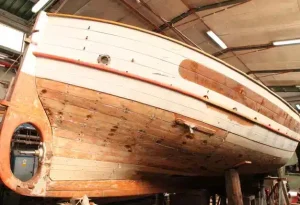
Today, however, thanks to technological advancements, shipyards manage the haul-out and movement of boats using cranes and travel lifts. There’s also a growing awareness of the need for new steel equipment for positioning boats on land, in order to ensure a perfect cradle for boat owners. Specifically, for maneuvering in technical areas and space optimization, Navaltecnosud Boat Stand has designed motorized or towed trailers that transport motor and sailboats and position them with maximum safety in desired locations. Furthermore, the company has implemented innovative technology in equipment for blocking boats on land, leading shipyards worldwide to replace wooden chocks and poles with galvanized steel equipment. As a result, there’s now a multitude of fixed or adjustable supports for the keel of motorboats, as well as various models of vertical or inclined stands with adjustable height to be placed on the hull sides of these motorboats. For sailboats, the stands have fixed or adjustable inclinations to best adapt to all hull shapes.
The perfect cradle for every type of boat
Navaltecnosud Boat Stand manufactures various products suitable for every need in modern haul-out operations, meticulously adhering to the stringent obligations imposed by the European Union for producing this equipment with the highest safety factor and being able to leverage CE certification by affixing a metal plate on each product to guarantee reliability. The graphs below illustrate the precautions and the most suitable equipment to use according to the size of the boat: these indications stem from the long and established experience of Navaltecnosud Boat Stand, which can be beneficial to all shipyards and yacht clubs.
Motor boats from 6 to 10 meters
For the perfect cradle for a motorboat ranging from 6 to 10 meters, a single simple and relatively low-height equipment, such as the one shown in the image above, is sufficient, as there is no need to support excessive weight.
Motor boats from 11 to 15 meters
As the size (and hence the weight) of the motorboat increases, multiple pieces of equipment are necessary. In particular, Navaltecnosud Boat Stand suggests using fixed heels, double telescopic adjustable heels, vertical boat stands, and fixed inclination stands. The correct positioning of these four pieces of equipment is indicated in the image above.
Motor boats from 16 to 20 meters
For motorboats ranging from 16 to 20 meters, the perfect cradle requires a smaller variety of equipment compared to smaller hulls, but with greater quantity and capacity. Specifically, Navaltecnosud Boat Stand suggests using fixed heels, double telescopic adjustable heels, and vertical stands, always following the positioning indicated in the image. The strength of these equipment pieces is obviously higher compared to the models suggested for hulls from 11 to 15 meters.
Motor boats from 21 to 40 meters
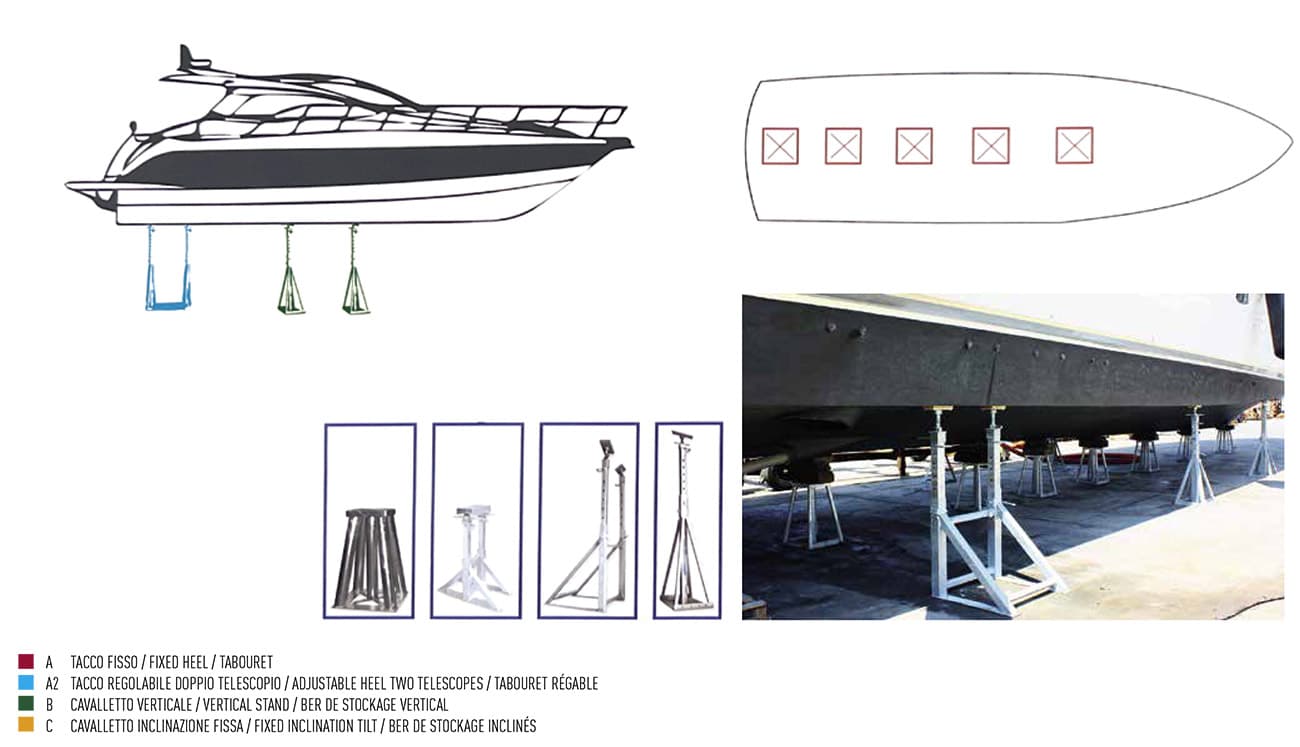
Motorboat from 21 to 25 meters
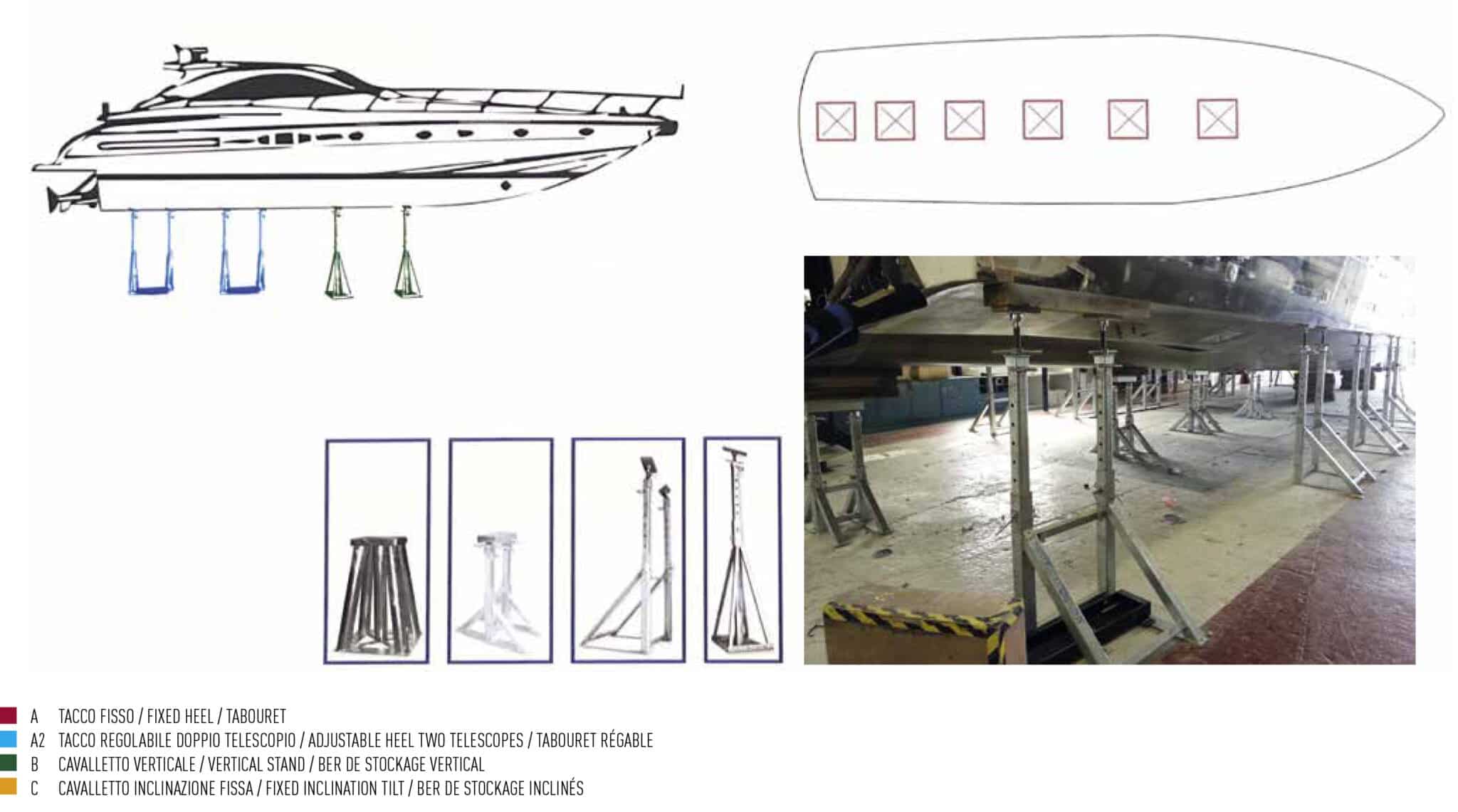
Motorboat from 26 to 30 meters
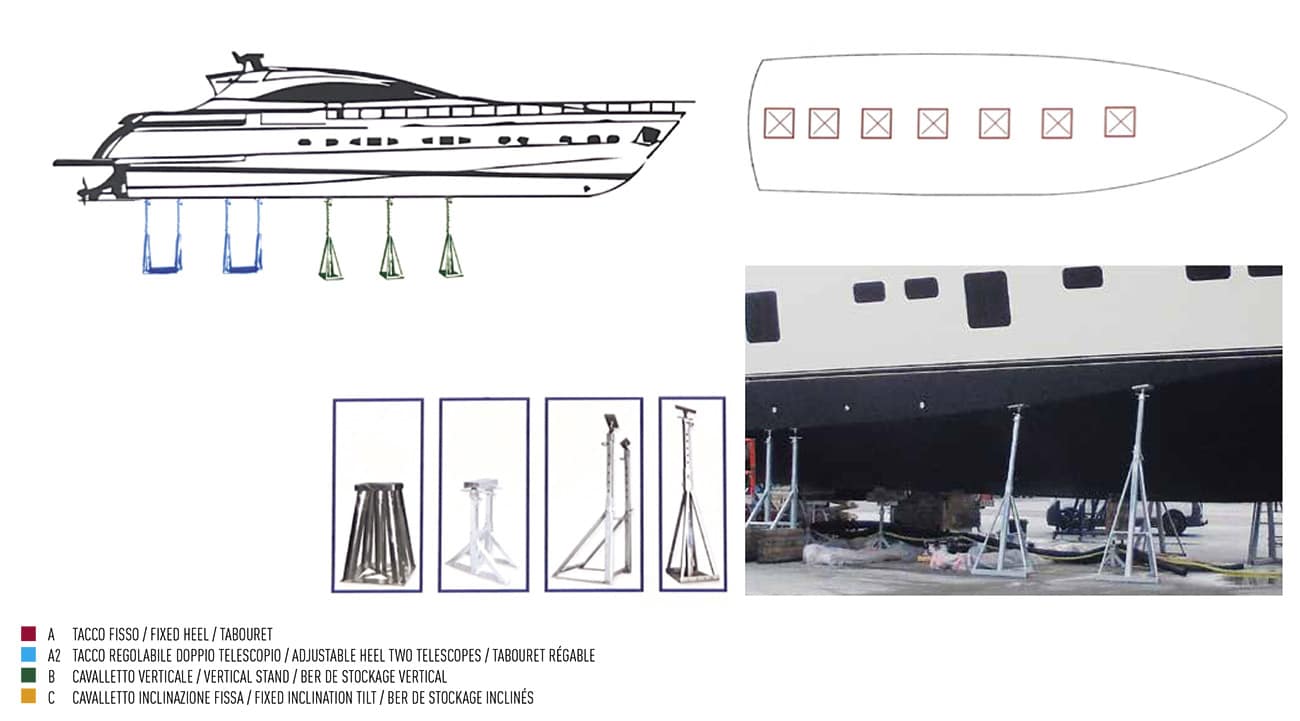
Motorboat from 31 to 35 meters
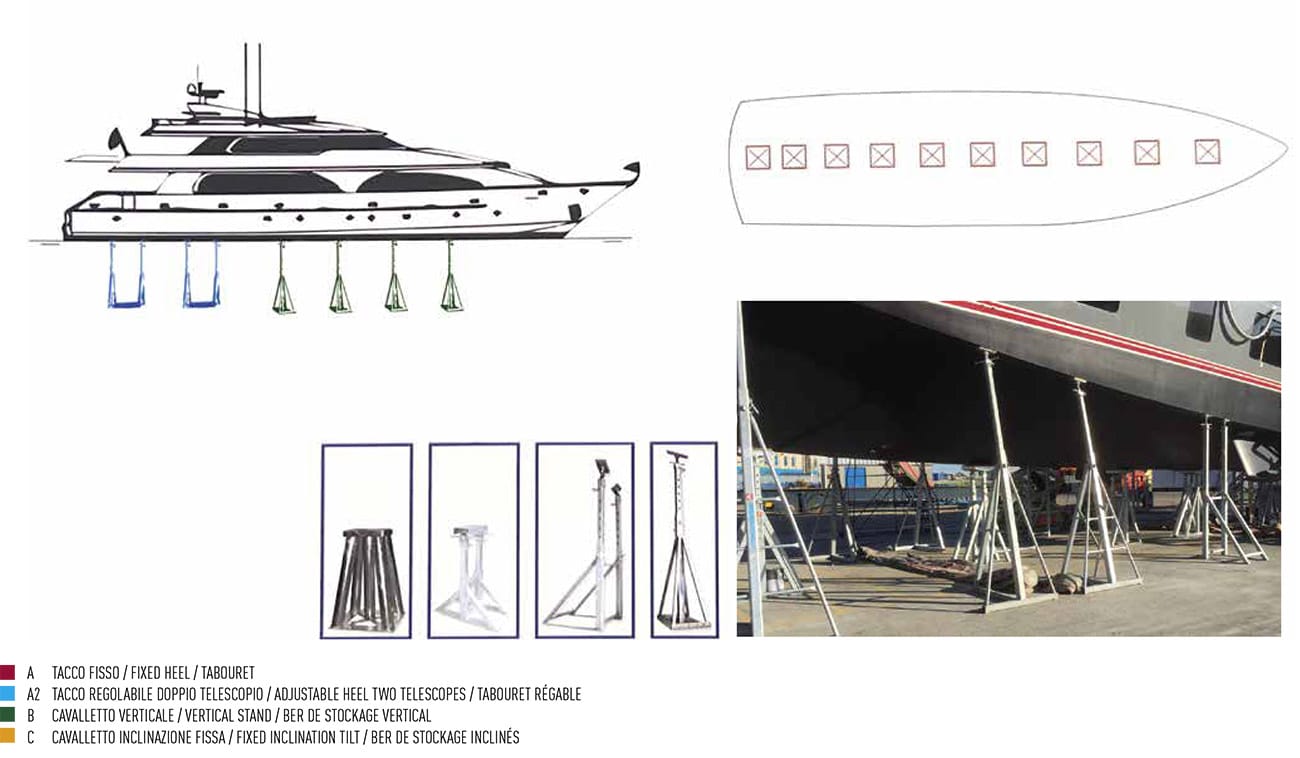
Motorboat from 36 to 40 meters
As the size and weight of the boat increase, an additional aid is required to achieve the perfect cradle. For motorboats ranging from 21 to 40 meters, in addition to fixed heels, adjustable heels, and vertical stands, it’s crucial to use fixed inclination stands that can safely support the hull. The number and positioning of these stands vary depending on the length (some examples are shown in the gallery images above).
The perfect cradle for sailboats
The discussion about the perfect cradle for sailboats is completely different, as they are lighter structures due to the absence of the engine, which constitutes the main weight to be kept lifted. In this case, Navaltecnosud Boat Stand suggests using simple trailers, following the number and positioning suggested in the following images.
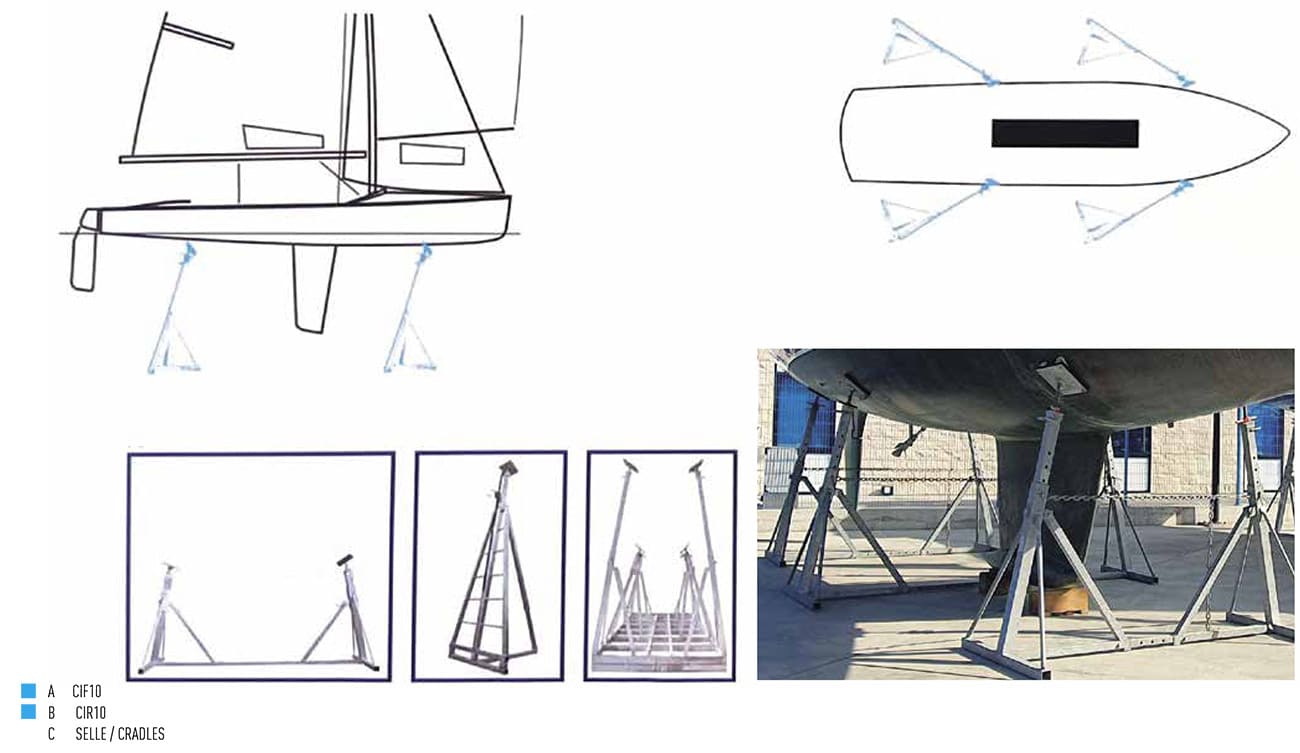
Sailboat from 10 to 14 meters
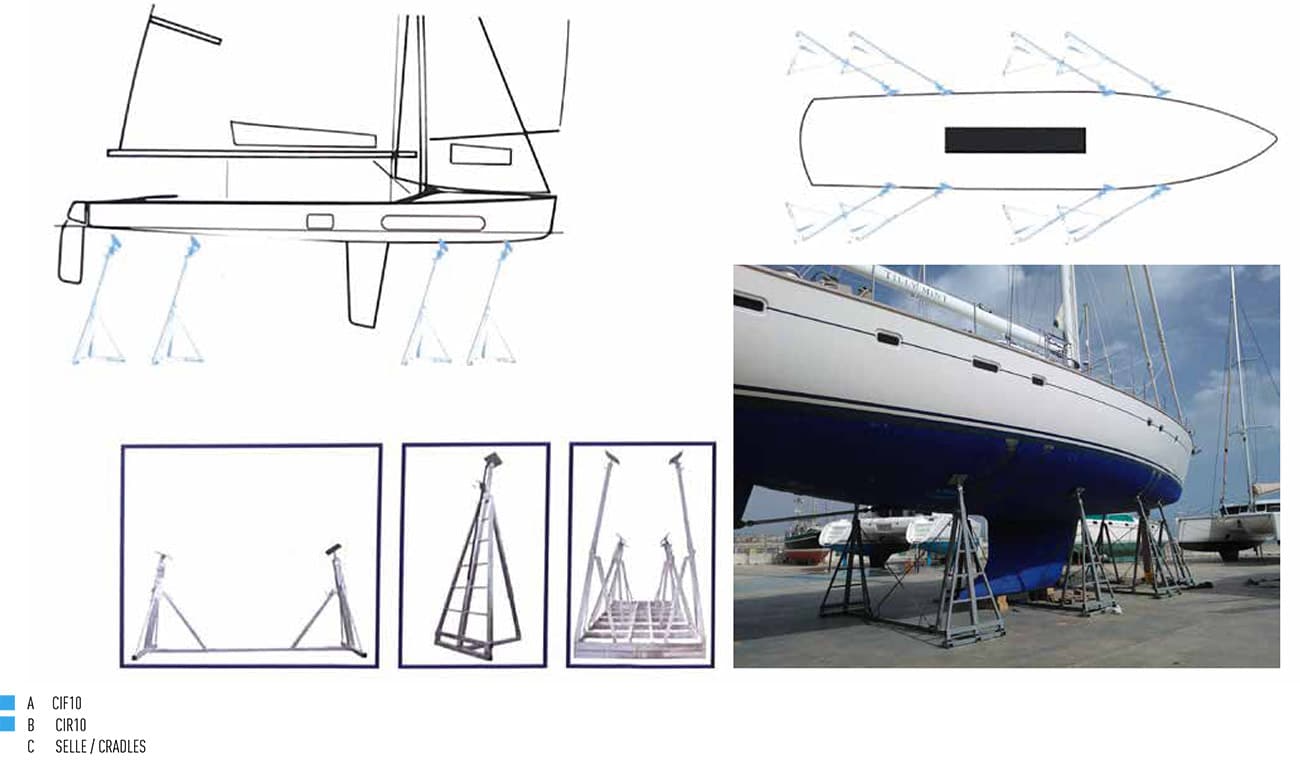
Sailboat from 15 to 20 meters
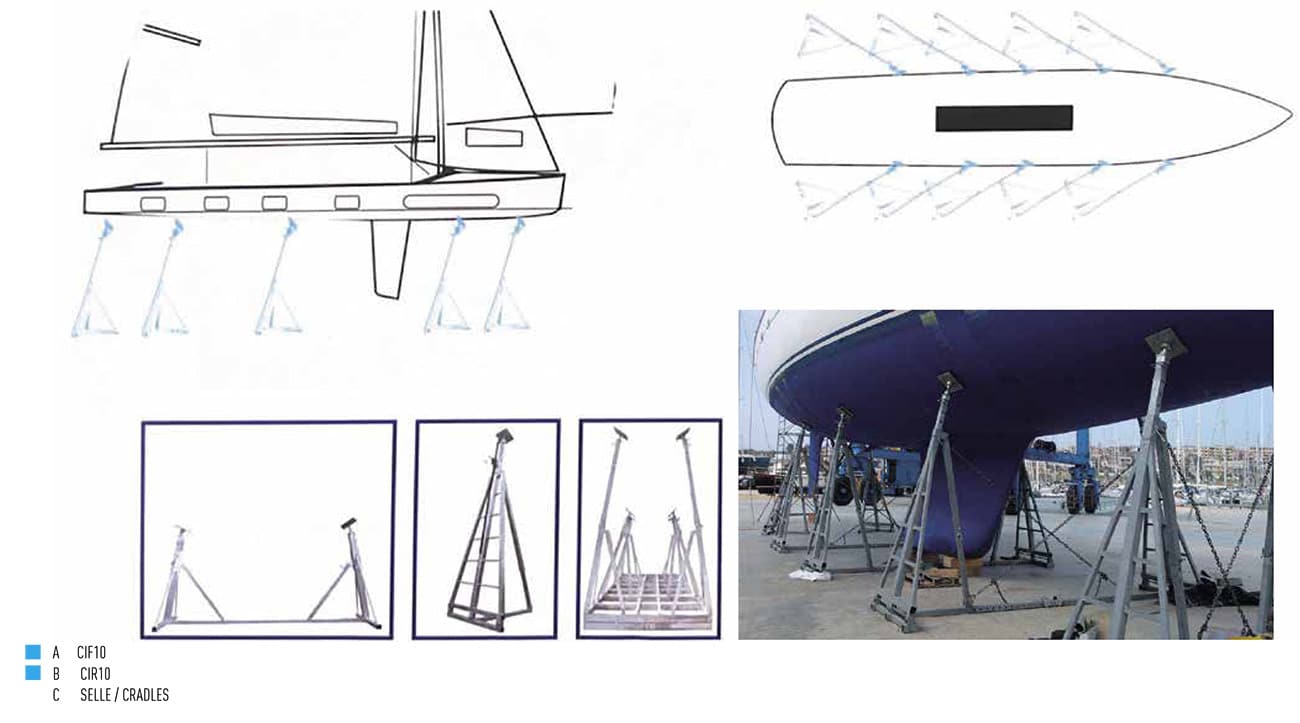
Sailboat from 20 to 25 meters
Further considerations for the perfect cradle
In this short guide, we’ve tried to summarize the different systems for safely grounding various types of sailboats and motorboats, while adhering to the obligations of CE certification. For boats with fragile hulls or for carbon fiber sailboats, Navaltecnosud Boat Stand recommends using additional stands to better distribute the weight and avoid damaging the hull contact points. Additionally, for sailboats and large motorboats, considering their rounded hulls, it is essential to connect the supports together using braces and chains with a tensioning system.
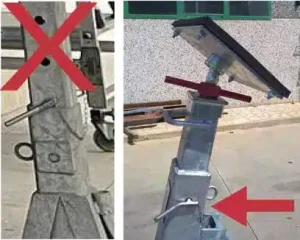
For further information, the experts at Navaltecnosud Boat Stand are available to provide advice and suggestions.
NAVALTECNOSUD BOAT STAND
Phone +39 393 5493586
https://www.navaltecnosud.it/en/
